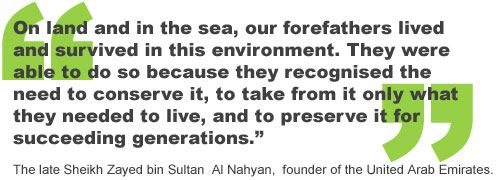ESTIDAMA

ESTIDAMA is the Arabic word for sustainability, and the Estidama programme is an initiative developed by the Abu Dhabi Urban Planning Council to achieve the late Sheikh Zayed bin Sultan Al Nahyan's dream to achieve a sustainable way of living in the Arab world.
ESTIDAMA aims to create more sustainable communities, cities and global enterprises and is based on the four pillars of sustainability - environmental, economic, social, and cultural.
ESTIDAMA incorporates the Pearl Rating System that addresses and evaluates the sustainability of a development throughout its lifecycle from design through construction to operation: the system recognises that the reality of ownership and responsibility changes as a project evolves from design to construction and then to facilities management team, and so comprises three rating stages – design, construction and operational. Version 1.0 of the Pearl Rating System was issued in April 2010.
The Pearl Rating System aligns with much of the criteria and reference standards within BREEAM and LEED while incorporating additional criteria unique to the Middle East, so making the Estidama rating system more responsive to the cultural and resource issues of the region: 1 pearl is the entry level while 5 pearls represents the highest level of sustainable achievement.
The Pearl Rating System encourages the adoption of sustainable design and strategies across seven categories which are weighted according to the number of mandatory and optional credits within each section. The categories are as follows: Integrated Development Process (IDP, 7%: which encourages cross-disciplinary teamwork to deliver environmental and quality management throughout the life of the project); Natural Systems (NS, 7%: conserving, preserving and restoring the region’s critical natural environments and habitats); Livable Buildings (LB, 20%: improving the quality and connectivity of outdoor and indoor spaces); Precious Water (PW, 24%: reducing demand and encouraging efficient distribution and alternative water sources); Resourceful Energy (RE, 25%: targeting energy conservation through passive design measures, reduced demand, energy efficiency and renewable sources); Stewarding Materials (SM, 16%: ensuring consideration of the ‘whole-of-life’ cycle when selecting and specifying materials); and Innovating Practice (IP, 1%: encouraging innovation in building design and construction).
Delmatic lighting management systems assist in sustainable design and in the achievement of high ESTIDAMA scores by addressing requirements across a number of the categories.
Delmatic systems gain credits across the ESTIDAMA categories addressing issues including light pollution reduction, managing lighting, daylight and glare, presence-related control of precious water, achieving minimum and improved energy performance, energy monitoring and reporting, as well as benefiting stewarding materials through longevity of life and maximising re-use.
Find out how Delmatic systems help achieve ESTIDAMA by requesting our comprehensive guide “Lighting management and ESTIDAMA – a clause by clause evaluation”. Please fill in your details on the right.

